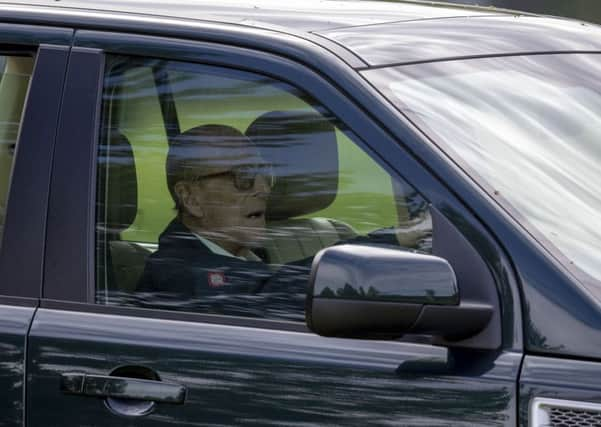Prince Philip’s seatbelt fail may reinvirogate fluorescent idea – Alastair Dalton


For the Duke of Edinburgh to be pictured driving without one, days after last week’s crash, is extraordinary.
It is likely to bolster the misplaced criticism of older drivers, when they have a better safety record than other age groups.
Advertisement
Hide AdAdvertisement
Hide AdSeat belts are a road safety fundamental, proven to greatly reduce the risk of death or serious injury. They are one of the Scottish Government’s road safety priorities, among those which “most need to be tackled” to reduce road casualties.
One in three people killed in vehicles were not wearing them – and half of those would have survived if they had been.
Motoring groups have said it also puts an “unfair burden” on emergency services, who are forced to deal with the aftermath of “such selfish behaviour”.
However, far more significantly, the duke’s case represents a hugely high-profile bad example to others. Experts have pointed out that compliance influences children’s own behaviour when they become drivers and adopt the good – or bad – habits of those who drive them around.
Police Scotland said last year it had been “astonished” to have caught more than 8,000 drivers and passengers annually not wearing a seatbelt. In the duke’s case, Norfolk Constabulary said “suitable words of advice have been given to the driver”.
Those pictures of him on a public road near the Queen’s Sandringham estate even prompted the renowned research body TRL – formerly the UK Government’s Transport Research Laboratory – to weigh in.
On Tuesday, it reminded drivers of the “critical” importance of seatbelts because not buckling up made airbags less effective in addition to being illegal and potentially fatal.
It pointed out drivers who fail to wear one face a fine of at least £100, rising to a maximum of £500. Perhaps it should be much higher, along with the addition of penalty points on driving licences, as road safety groups have urged.
Advertisement
Hide AdAdvertisement
Hide AdBut errant drivers prefer being cajoled rather than penalised – like those “Your speed” signs with happy/sad faces rather than speed cameras. For seat belts, how about a warning sound that gets progressively louder and can’t be switched off until the belt is buckled?
I know how distressing these can be for parents parted from their baby as they drive to the airport for a foreign trip – the alarm triggered by their youngster’s buckle being left undone because the child seat has been removed.
The equivalent of that heartrendingly insistent sound for wilful seatbelt refuseniks might be a tone so irritating they get fed up and belt up. I came to see how much seat belt use was a no-brainer when Stewart Stevenson was transport minister a decade ago.
Seeing the impact their greater use could have on Scotland’s road death toll, he was an ardent advocate of anything to achieve it.
He even proposed new cars should be fitted with fluorescent seatbelts so police could more easily spot those not wearing them.
That achieved UK-wide publicity, and I remember even being interviewed about it by Jeremy Vine on Radio 2.
At the time, it was suggested that such brightly coloured seatbelts could be trialled on some of the worst offenders, such as van drivers, around 40 per cent of whom fail to belt up.
It might do for royalty too.
